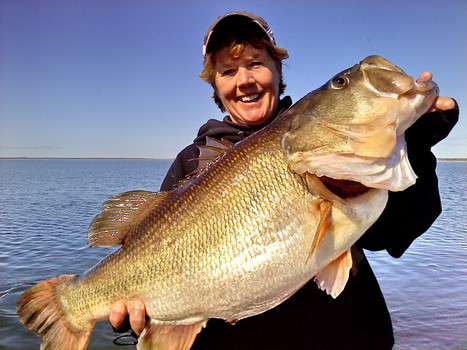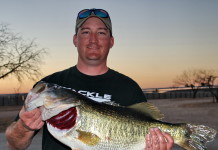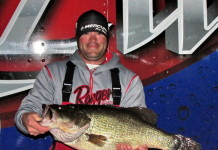Texas bass fishing is akin to Texas deer hunting: You don’t have to go far to find the big ones.
Many of the state’s more than 2 million resident anglers have started their pursuit of finding the lunker of a lifetime, while some have hit the jackpot recently. There have already been fish weighing more than 13 pounds entered into the Toyota ShareLunker program during the season that runs through March.
It’s a good bet that the action will continue to pick up as temperatures warm and stay consistent across the state, while winter rains have somewhat helped the problem that plagued many bodies of water during the prolonged and severe drought.
A look at this past season’s ShareLunker entries again shows hefty largemouths caught in nearly every region of the state.
With that in mind, here’s a statewide look at what generally are regarded as the top locales for lunker bass fishing.
West Texas
Lake Alan Henry once was the hottest largemouth lake in the state, producing multiple ShareLunker entries for a number of years. However, the lake somewhat slowed down in producing huge bass, with entries scattered throughout recent years. It still remains a great place to find big fish though, featuring prime shoreline structure that attracts and holds largemouths. There are areas of standing timber and coves that keep fish around as they spawn later into the spring.
Spotted bass, stocked in addition to largemouths, provide anglers with more options and grow faster than largemouths, often reaching 4 pounds or more at mature ages.
Erik Atkins of Lubbock was fishing in a tournament at Alan Henry in January 2011 when he caught the state record spotted bass, a 5.62-pound fish that hit a shaky head jig in a rocky area in less than 5 feet of water, while Amarillo firefighter Billy Greeson landed the 15-pound lake record largemouth in March 2006 after it took a black and blue jig.
Other fantastic bass lakes are Amistad International Reservoir, which is on the Mexican border near Del Rio and has hosted numerous top-tier tournaments, and O.H. Ivie Reservoir near San Angelo, which caught fire a couple of years ago and produced multiple massive largemouths. Amistad is loaded with rocky structure and has some aquatic vegetation including hydrilla that bass love to hide in, while Ivie has rebounded from drought and filled in, flooding standing timber including mesquite and oak trees.
North Texas
When it comes to fishing options, the area from the Metroplex to the Oklahoma border always has been near the top of the list, and this year should be no different.
Lake Texoma long has been known as the best striped bass fishery in the country, but it also boasts good-size largemouths and smallmouths. The lake has had a blue-green algae scare during recent years and remained under an advisory level, but that shouldn’t deter anglers from the options available to them.
Ray Roberts Lake and Lake Ray Hubbard also feature solid bass fisheries with superb habitat including standing timber and rocky areas such as riprap that could harbor bass that move up shallow to spawn. One lake with both smallmouths and largemouths that isn’t fished as hard as others with both species is Lake Bridgeport. It also features rocky structure including gravel beds and is dotted with numerous “fishy” points.
Central Texas
The central portion of the state has seen struggles in the form of golden algae outbreaks, but there remain good bass fisheries in the region, including the hottest bass lake in the state.
Lake Austin, which is only 1,600 acres, has produced numerous ShareLunker entries during the past decade and is one of the best metro fishing opportunities in the state. There are a number of creeks that enter the lake and the shoreline features perfect spawning habitat in the form of weed beds.
The region also boasts one of the most majestic bodies of water in the state, Lake Whitney. The lake near Waco is scenic and angler-friendly. The 23,000-acre lake has no shortage of flooded vegetation and also boasts a population of smallmouth bass that will almost certainly be holding near any type of rocky structure as temperatures warm.
East Texas
The eastern part of the state has some of the largest and most sought-after bass waters, and this region continually produces some of the largest fish. Lake Fork is the most well-known bass fishery in the world and numerous professional bass anglers consider it their home lake. Fork is responsible for more than half of the fish entered into the ShareLunker program and consistently produces a few fish topping 13 pounds each spring.
Sam Rayburn Reservoir near Jasper and Toledo Bend Reservoir on the Texas-Louisiana border also are a pair of massive bodies of water that feature an almost never-ending supply of fishing opportunities.
Another eastern lake with a good reputation is Lake Conroe, which has produced a number of ShareLunker entries in recent years.
South Texas
Many anglers in South Texas may be more apt to run over to the coast in search of redfish and speckled trout, but there remain a number of outstanding bass fisheries in the region.
At the extreme end of the state, near Zapata, sits Falcon International Reservoir, which has gained fame both good and bad. On one hand the lake may be the hottest largemouth locale in the country, featuring an amazing array of habitat harboring massive fish that are more active throughout the year than other hot spots. It also has gained notoriety because of its proximity to the ongoing drug-related violence in Mexico and because an American tourist was killed there in September 2010.
Many fishing guides on the lake continue to fish the Mexican side of the lake without incident, but it’s a safe bet they remain vigilant. To fish on the Mexican side you must possess a valid Mexican fishing license.
One lake that caught fire in the lunker haul a couple of years ago and has somewhat cooled off is Choke Canyon Reservoir south of San Antonio. The lake has produced a number of large fish in the past few years, including the 15.45-pound lake record in January 2009. The reservoir has a varied amount of habitat including rocky banks, flooded timber, shallow brushy flats and creek channels – all places where big bass could be lurking in the next few months.
It’s a great time for bass fishing and there’s no better place to be than Texas, no matter what part of the state you call home.
It’s time to play well with others in Texas hunting, fishing pursuits





















